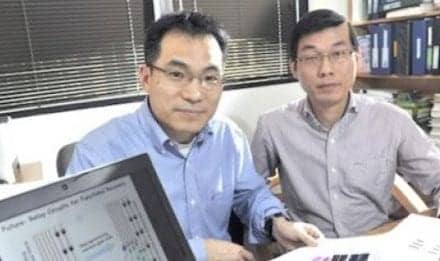
“The more stiff the material, the faster the waves travel. In fibrous materials, such as muscle and white matter in the brain, stiffness depends on direction,” Bayly says.
He adds that to this end, he and Garbow plan to use waves propagating in different directions with different polarizations to study the mechanical properties of these tissues. The study results could hold promise for new diagnostic tools for nerve and brain disorders and new insight into how artificial tissue degrades over time.
As part of the research project, the university says, Ruth Okamoto, DSc, senior research associate in Mechanical Engineering & Materials Science, will also reportedly use a bowl of gelatin in a clear glass bowl to mimic the brain inside the skull. Once the side of the bowl has been hit, waves are visible in the gelatin, Okamoto says. In the lab, the researchers “put the bowl on a shaker. With the right frequency and a strobe, the waves appear to stand still. If the [gelatin] is stiff, the waves are longer. If it is soft, the waves will be shorter,” Okamoto explains.
The release notes that participants in a Campus Y program, designed to encourage local middle-school students to being thinking about college, will also visit the lab for demonstrations of how forces on the skull create motion in the brain, using the gelatin.
“We hope they go away with a better appreciation for how their brain can be injured inside the skull,” Okamoto says.
A $395,000 grant from the NSF will also fund Bayly’s work targeting the measurement the mechanical properties and processes that lead to motion in cilia and flagella. The release reports that Bayly and his colleagues, including Susan Dutcher, PhD, professor of genetics and of cell biology and physiology at the School of Medicine, Jin-Yu Shao, PhD, associate professor of biomedical engineering, and Gang Xu, DSc, assistant professor at the University of Central Oklahoma, aim to measure the mechanics in genetically modified flagella in algae that are close in structure and behavior to human cilia.
Using a high-speed video imaging technique, researchers will work to obtain high resolution images of the flagella waves, then analyze the images to estimate its forces through fluid. The researchers note that the findings could pave the way for an enhanced understanding of cilia and flagella, offering new insight into how they fail in disease and ultimately to developing new diagnostic tools or therapy.
An “axobot” will also serve as a large scale model of the algae flagella, which Okamoto will use to allow undergraduate students from Washington University and the university of Central Oklahoma visualize and explore how the flagella moves.
Source: Washington University in St. Louis





